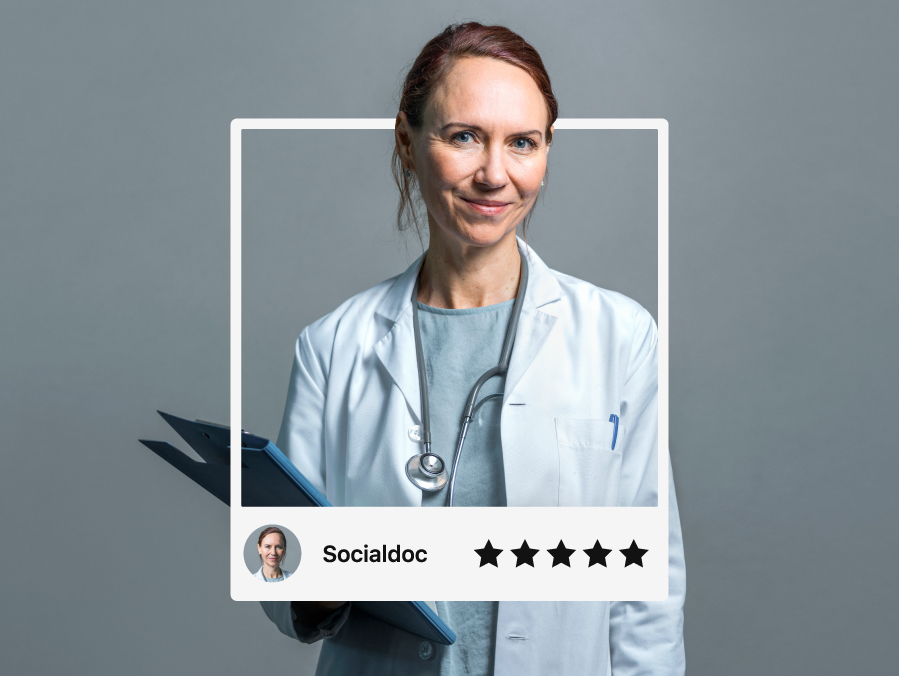The direct-to-consumer model is the Next Big Thing in healthcare. The trouble is, it has been spoken about that way for over forty years, with some healthcare companies dipping their toes into the water and others hesitating. Now, finally, the time has come. Welcome to the New Big Thing.
What is the direct-to-consumer model in healthcare?
The DTC model allows brands to communicate their propositions and market their products and services directly to customers through digital media channels. It is perfect for today’s ultra-connected customers, who have greater access to their healthcare data and understand it more clearly.
Digital-first businesses are leading the way, but traditional organisations are also expanding into DTC healthcare marketing. Meanwhile, the tech giants are pouring billions into the sector.
With consumers spending more and more via digital channels, it has never been more vital for healthcare providers to fully understand the DTC model. Healthcare businesses need to act urgently—or miss out on the DTC dividend.
How Covid has sparked digital innovation
The pandemic has accelerated growth in what was already a hugely successful space. In recent research with 300 CMOs at UK brands, 97% say that DTC channels have become a priority during the pandemic. Encouragingly, 47% say their brand is selling even more as a result.
And this is no flash in the pan. Nearly half (46%) of CMOs expect DTC to make up 30% of total sales over the next five years.
DTC’s challenges and opportunities
Rising consumer demand
Before the COVID-19 pandemic, one-third of consumers planned to do at least 40% of their shopping from DTC brands over the coming five years. Now, over half (52%) say that 20% or more of their purchases will be DTC brands. Over half of consumers (58.4%) claim that buying directly from brands is quicker, while others cite the ease of search (57.4%) and the fact that products are cheaper (32%). Furthermore, 83% of consumers intend to shop online with equal or greater frequency after the pandemic. 81% of B2C brands claim that customers now expect greater levels of service, personalisation, and quality.
Demand for wearables
The wearables market was already growing rapidly, worth around $27bn in 2019. Then the
pandemic changed our relationship with health data.
Now, around 66% of consumers say that the pandemic has made them more willing to monitor their health with a wearable device. Moreover, the majority (82.4%) of adults who already use a wearable device say they are willing to share their data directly with their care providers.
Digital innovation
Innovative startups are fuelling the rapid expansion of the DTC healthcare market. In fact, healthcare products and services are one of the fastest-growing sub-categories in the DTC space.
In 2018, digital health saw record investments of over $8bn—a 42% increase in a single year.
The DTC genetic testing market alone is projected to be worth $1.9bn within the next five years. Other new digital businesses specialise in mental health and emotional, psychological, and social wellbeing.
How one traditional retailer is adapting to DTC
While startups and tech-led healthcare organisations are breaking new ground, smarter legacy companies are successfully playing catch-up.
Across the Atlantic, Walmart foresaw the rise of DTC and began recruiting talent from DTC companies to modernise their business. They also bought telehealth provider MeMD to help expand their Walmart Health service across North America, complementing their bricks-and-mortar locations with a DTC digital element.
Partnering arrangements are also flourishing. In 2021 Ro, a four-year-old company “building a patient-centric healthcare system”, announced a US-wide partnership with Walmart. Ro was already a huge success, but its value skyrocketed by more than $3.5 billion between July 2020 and March 2021. 90% of all Americans live within 10 miles of a Walmart and over half (59%) of Ro’s prospective customers shop there. Ro has now facilitated over six million digital healthcare visits across every state and every county in the US, including a staggering 98% of “primary care deserts”—areas with low or no primary healthcare support.
An example of DTC in action
A recent example of direct-to-consumer in action from the pharmaceutical sector is Abbott’s introduction of Freestyle Libre. This is a consumer subscription option aimed at improving access to diabetes care devices and driving loyalty, using many of the approaches pioneered by Software-as-a-Service (SaaS) platforms.
How tech giants are adapting
Amazon, Apple and Google are investing heavily in organisations that build upon their expertise to deliver DTC healthcare products and services straight to consumers, providing access to a $12 trillion economic opportunity.
Amazon
In 2018, Amazon launched an exclusive line of over-the-counter (OTC) medicines under its Amazon Basic Care brand. That same year, they purchased PillPack, an online pharmacy, gaining the ability to ship prescriptions around the US and directly challenge the $400 billion pharmacy market. Analysts now suggest that an entire self-contained healthcare ecosystem could be created for Amazon Prime customers, combining the Prime network, Alexa as a “pseudo physician assistant”, and their burgeoning wearable tech business.
Apple
Apple already dominates the smartwatch and wearables market, selling three times as many devices as its nearest competitor. Together, the Apple Watch, iPhone, and Apple Fitness subscription form a closed ecosystem, creating a captive audience receptive to new products and services. The Apple Watch now incorporates ECG data and can send this directly to a healthcare provider.
Using “always on” healthcare marketing to nurture the customer journey
A few years ago, Public Health England took the bold decision to revolutionise its marketing communications. It replaced seasonal campaigns, such as the October/StopTober anti-smoking drive, with harder working communications, better audience engagement, and maximum conversion at every stage of the customer journey via “always-on” marketing communications. This approach helps healthcare brands to meet HCPs and patients where they are and on their terms. It also avoids wasteful “radio silence” between campaigns.
But “always-on” demands joined-up thinking
Healthcare brands often struggle to make the always-on approach work as efficiently
as it could, and some healthcare companies have been making expensive mistakes.
At TrunkBBI our longstanding work with healthcare companies, business-to-business organisations, and consumer brands has enabled us to identify three key causes of such errors
- Disconnected silos: Traditionally, healthcare companies are organised as a series of vertical silos. Over 80% of business leaders across sales, HR, procurement and other departments agreed that problems “arise because they have different internal systems/applications that don’t talk to each other”.
- External disconnectedness: Joined-up external communications are even more difficult to achieve, and growing businesses lose 20-30% of their revenue through operational inefficiencies. It is vital that your external partners, including creative, digital and media businesses, work in a coordinated way. 68% of marketers are frustrated by the protracted length of time agencies take to turn around briefs.
- Disconnected data: From search, site tracking, and social media to personalisation and optimisation, data is the ultimate driver of an always-on approach for healthcare brands. Yet disconnected silos at an organisational level cause data blockages, leading to knowledge gaps within businesses and departments. The data is there, but not being shared correctly or used to its full potential. This is made worse by two further data problems:
- The divide between people’s desire for personalised services and their reluctance to provide personal information
- The demise of third party cookies, with Apple and Google giving users greater privacy controls over their personal data
Brand power and consistency are more essential than ever
Successfully harnessing an “always-on” approach demands orchestration across an increasing number of channels and touchpoints. That calls for a consistent, relevant, and persuasive brand presence along the entire customer journey. In particular, you need to:
Leverage your market potential in the reach stage
Targeting your HCP and patient audience on social at scale, reaching prospects or lapsed customers by exposing them to your healthcare brand and/or product offering.
Why direct-to-consumer marketing (DTC) is vital to the future of healthcare
Nurturing prospective customers during the awareness, consideration, and conversion stages. This means aligning their unmet needs with the solution your healthcare brand offers.
Build deep engagement during the engagement and loyalty phases
You can then retain a strong connection with the brand and products and foster loyal customers and advocates.
Maximise engagement and conversion throughout the lead generation funnel
Amplifying relevant content through appropriate and resonant channels at every stage of the customer journey.
Harness customer-centric content creation
Adopt a needs-based approach to content creation to ensure relevance. You can then create immersive omni-content that will maximise engagement and deploy interactive elements to drive personalisation.
More than 90% of customers demand a consistent brand experience across all platforms and channels. Yet businesses are aware that they are falling short of these expectations.
Only 55% of marketers think their internal and external brands are currently aligned. Fewer than 10% of B2B companies say their branding is very consistent across their customer journey.
Ready to get the DTC model working for you?
Re-evaluating your strategy can seem daunting. There’s a lot to consider, and this can bring its own challenges if your organisation doesn’t have the dedicated expertise.
That’s why partnering with a digital content marketing specialist such as TrunkBBI can help. We bring together always-on marketing best practices from the B2B and B2C spaces, and specialise in working with healthcare organisations to help them achieve their digital and performance goals. Get in touch by calling us or filling in the form below.




